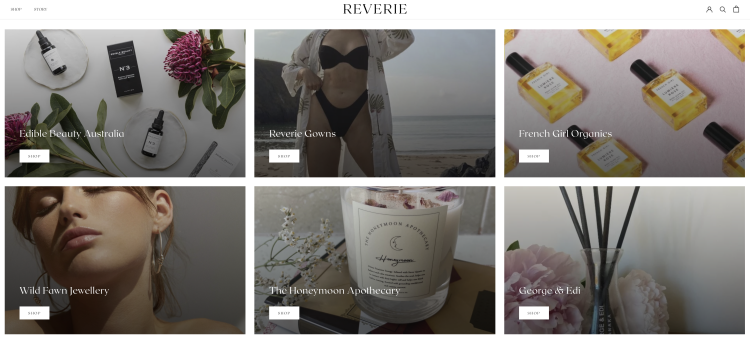When it comes to selling online, fashion is a vertical that continues to dominate. Over the last year, the revenue of this market has grown by 7%. The predicted compound annual growth rate for the next four years is 5%, and this declining growth rate suggests that the market might be reaching saturation point.
So, is fashion a game you should be getting into right now? The answer is yes – if you know how to stand out from the crowd, for all the right reasons. In this article, we’ll explore a few of the ways that you can elevate your ecommerce fashion store above the noise of the competition to start an online clothing brand that will truly stand the test of time.
1. Tell your story
For many people, clothing provides one of the clearest pathways to self-expression. For better or worse, “clothes maketh the man” – we tend to make assumptions about a person based on the way they choose to dress themselves.
With this in mind, it’s hardly surprising that shoppers want to wear brands that represent their values, and clearly communicate their stance in the world. Ethical retailers have an added advantage here – they cater not only to a specific aesthetic and style, but also to customers with an interest in sustainability.
The best way to set yourself up for success is to make sure the right audience can find you. Make sure you tell your story, and clearly signpost your values across every channel and touchpoint of communication.
When it comes to clothing, conscientious buyers are looking for the backstory. So get creative, telling the tale of your clothing’s design and creation. The chances are you’ve put plenty of thought into this, so if you have gone above and beyond, make sure that care and attention is conveyed to your customers – they care about this stuff, so don’t “green hush” or undersell your efforts.
You’ll also want to make the purpose of your business clear. Are you in this purely for profit, or are you helping create jobs in a struggling community, raising awareness of important issues, creating a sustainable alternative or giving back to a particular cause? Whatever makes you different, make it known!
2. Know Your Niche
Demand for online apparel is high – in fact, the world seems a bit addicted to buying clothes from the comfort of their own home and… well, it’s a problem. The fashion industry is the second biggest consumer of water and is responsible for 8-10% of global carbon emissions.
As a retailer, you (hopefully!) don’t want to be adding to the problem of overconsumption, but clearly, you need to be making sales. So, what’s the best way to ensure that your goods are getting the folk who will really use, value and treasure them? It’s simple – know your niche.
Taking a little extra time to really get to define your target audience and understand what makes them tick is an essential part of building an online clothing brand. Let’s face it, you’re up against a lot of competition! By selling to a carefully researched subsection of the general public, you can make sure that your offer, position and messaging is all perfectly tailored to appeal.
It’s important to ensure you’re talking to the right audience for many reasons – not least because all our communications carry a digital carbon cost. By making your messaging as targeted and precise as possible, you can make sure you’re getting the very best return on your digital investment.
You also need to be able to reach the people who see true value in what you’re trying to achieve with your brand. Chances are that if you’ve sourced sustainable products and paid all of your workers and supply chain a fair price, the cost of your clothing is going to be higher than the less-ethical alternatives lurking just a few clicks away.
You can’t compete on price, so you need to find an audience who aren’t judging you by this standard alone, but who care deeply about the values that your brand upholds and honours.
3. Choose the right business model
When it comes to selling clothing online, it's important to remember that there’s no “one size fits all” option. There are plenty of different ways that you can choose to set up your business with regard to the way your products are created – and all of them have potential advantages.
Let’s explore a few of the most popular options:
Print on demand.
This method is seeing a real surge in popularity. No stock is created or held, instead, as the name suggests, when an order comes in, a garment is created on demand, and then shipped directly to your customer.
Environmental Advantages
No wastage – everything's made to order, so no worries about overstocking. No need for lots of storage or warehousing (which generate emissions due to heating, lighting etc.) No additional transport from manufacturer to retailer – goods go directly to your customer.
Environmental Disadvantages
You might find limited options for choosing a truly sustainable manufacturer – often POD businesses run on tight margins, and so environmental choices such as eco-friendly inks and ethical materials might be harder to access. That said, there are some exceptions!
Custom cut and sew.
Custom cut and sew refers to clothing that has been made from scratch, out of raw materials, to your own design specifications. This is in contrast to private label clothing (more on that in a moment.)
Environmental Advantages
You are in complete control! With custom cut and sew, you’re working from the ground up, and so you can make sustainable choices at every turn - picking ethically produced, environmentally sound fabrics and collaborating with a manufacturer who shares your values (minimising wastage, running on green energy sources etc.)
Environmental Disadvantages
No real disadvantages (although cost is likely to be higher, so you’ll need to be especially focused on your positioning and targeting!)
Private label clothing.
An easier way to enter the apparel scene! Working with a manufacturer who creates their own generic clothing that you can then customise with your own branding and labels etc. Many big businesses run this way, and it’s how fast fashion tends to operate - working with many producers to get branded goods onto shelves quickly.
Environmental Advantages
It’s easy for our minds to go straight to large, unethical factories when we think of private label - but get creative. Working with a small group of artisans who produced garments for you to resell would fall into this category, and could be both ethical and sustainable. You may also find slight benefits in terms of economies of scale, especially if you’re looking to invest in a larger amount of stock and can factor in consolidated shipping etc. If you can find an ethical, environmentally sound manufacturer and build a solid relationship, this has the potential to be a great model.
Environmental Disadvantages
As ever, this method is only as sustainable as the partner you choose to work with...
4. Dropshipping.
Finally, let’s consider dropshipping - another model of ecommerce which is enjoying enormous popularity. In a similar vein to Print On Demand, customers’ order trigger fulfilment directly from the manufacturer.
Environmental Advantages
Again, no wasted stock – you’re only selling when there’s demand. There are also (hypothetical) emissions savings, as you’re removing the need to transport goods from factory to retailer.
Environmental Disadvantages
Dropshipping has a reputation for “pile it high, sell it cheap” – manufacturers are looking for profit, and this means low production costs. Not always a recipe for sustainable sourcing. However – all is not lost. It’s important not to generalise and write off a whole business model as unsustainable. Again, by getting creative you can explore the opportunity of working directly with ethical brands, makers and creatives to source products to be proud of.
5. Show up consistently
Finally, ecommerce operates on a truly omnichannel plane now. Customers expect to be able to interact with your brand in a variety of different ways, on a variety of different platforms – so don’t let them down and show up consistently for them.
This doesn’t mean you need to run yourself ragged operating every social media channel under the sun, but it does mean investing in the areas that you know will make a difference. Conscious consumers tend to want to know more about the products they’re buying - and as a mindful retailer with nothing to hide (and hopefully a lot of well-deserved pride in your offering!) you’ll want to be able to answer those questions in a friendly and “on brand” fashion, no matter where the questions are asked.
Hopefully, you decide to run an ethical brand and benefit from customers who share your values and outlook meaning they will be very happy to help spread your message. Integrating user-generated content into your website or social platforms can be a great way to help inform your prospective customers about your products - helping create more informed purchases, fewer returns (fewer emissions!) and happier first-time buyers!
6. Learn from those with experience
The really lovely thing about working within sustainable retail is that we’re all working towards a common, greater good. Our planet will always take precedence over any kind of petty competition, and so you may find that successful retailers that you look up to are only too happy to help answer your questions as your brand finds its feet.
To prove our point, we spoke to the very wonderful Lucy, a MindfulCommerce member, founder of The Reverie Boutique.
Here are her top tips for starting out...
Don’t compromise on quality for the sake of a cheaper price or a better MoQ
Don’t over-invest in the first collection – start as small as you can to see what your customers' reaction is before sinking a lot of capital into one certain style
Don’t overwhelm your audience, keep the collection quite streamlined in terms of prints and styles
Don’t compromise your vision – ask advice from friends and family, but remember your idea and opinion is the one which matters as you know your customers best
Looking for more inspiration? We caught up with Lucy on the MindfulCommerce podcast to discuss the intersection of e-commerce, sustainability and the luxe market - check it out now!

